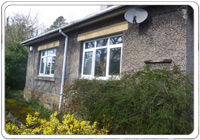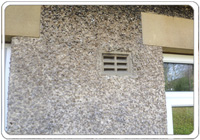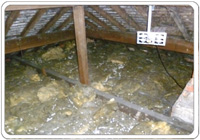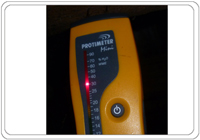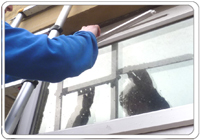
Case study: A detached bungalow in Cleckheaton with air quality and mould problems
The problem
This bungalow presented an interesting problem as it was suffering from condensation and mould throughout.
We noticed that a number of vents were present near the top of the walls on the outside, and our guess is that these were added in an attempt address the damp problem within the house.
Our assessment
Many bungalows suffer from poor air circulation which gives rise to condensation and mould formation. The bottom of the walls are colder and so this is where condensation forms first.
The installation of external vents was an attempt to bring fresh air into the cavity in the mistaken belief that the dampness was coming from the outside. In fact the problem has been excess humidity created inside the house.
When stale humid air is not effectively extracted from a property it usually manages to make its way into the loft. And where the loft is poorly ventilated then the result is often dampness in the timbers. In this case the roof timbers had become very damp.
Our solution
There were a number of ways in which we could resolve these problems. We needed to ensure that the humid air was being extracted from the kitchen and bathroom and that there was a controlled supply of fresh air into the house. We also wanted to address the high damp readings in the roof timbers and improve insulation where it was cost effective.
To address these problems we:
- Installed trickle vents to all the external windows. This is an apparently minor change but a number of trickle vents working together can be highly effective at bringing down humidity levels.
- The bathroom had had a fan fitted as part of the recent refurbishment. We recommended it was changed for a humidity controlled unit with always-on trickle function. Why ? Because fans that are activated by a light and have an over-run timer of say, 10 minutes, are simply not effective. Because:
- The light is not always switched on when a shower is used.
- It can take several hours to thoroughly dry out a wet room like a bathroom. And if the humidity escapes into the rest of the house it will condense on the colder surfaces.
- We recommended that vents were installed in the roof. This work was undertaken by a builder for the landlord.
- We also arranged for more loft insulation to be installed since the depth of the existing insulation was much less than the current standard.
See our page on solutions for condensation problems for further information.
High humidity + inadequate ventilation
= damp, condensation, mould

UK government advises:

